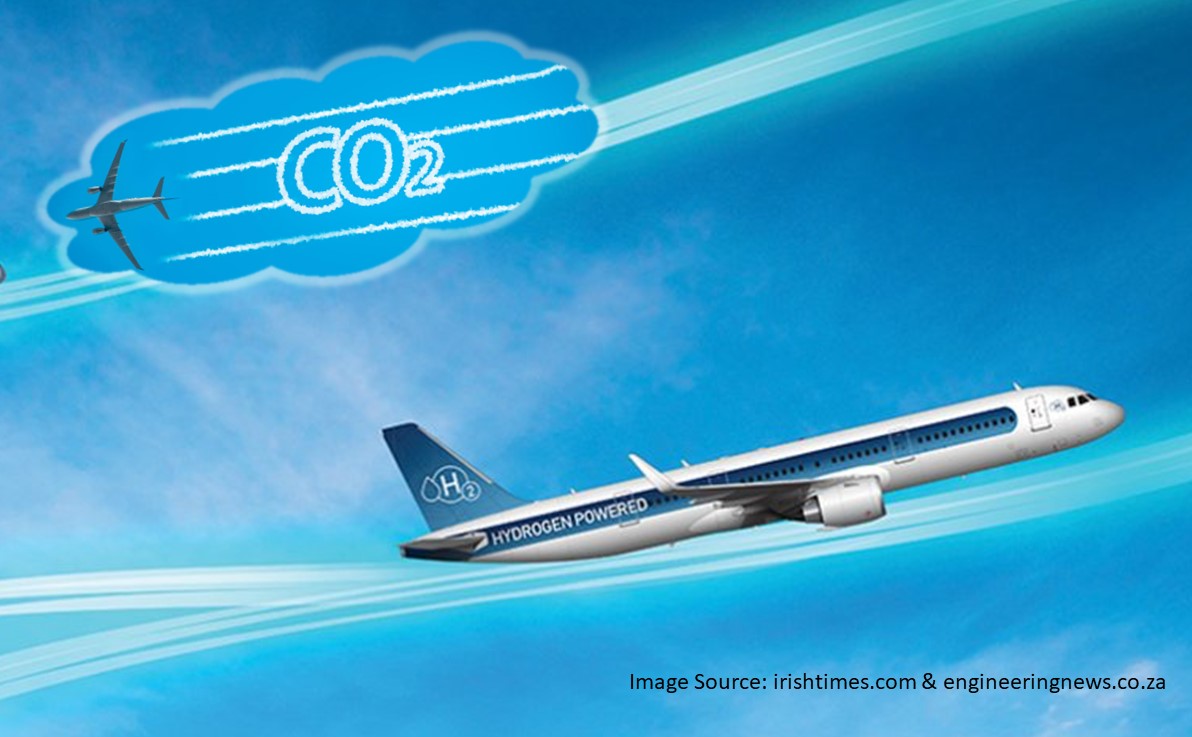Ah Tan Blog
2021-01-13
【Climate Innovation Stories】A possible end of Flight Shame: developing hydrogen powered aircrafts

Writer: Minal Jain
Since flights are energy-intensive and depend on fossil fuels, some may feel ashamed for taking a plane. However, because of lower demand on air travel, we barely think of “flight shame” in the past year. In fact, the aviation industry has taken a big hit during the pandemic and with most borders closed, travel recovery may take a while. Hence it is even more heartening to know that in spite of this major drag, aircraft makers are still pursuing dreams of zero emission flights.
Aviation produces around 2% of all human-induced carbon dioxide (CO2) emissions. Burning jet fuel releases greenhouse gases such as carbon dioxide into Earth's atmosphere and oceans. Other emissions including Nitrogen oxides (NOₓ, nitric oxide and nitrogen dioxide) also have a great global warming effect. And though Jet airliners have become 70% more fuel efficient (CO2 emissions in 2018 were 47% of those in 1990), overall emissions have risen as the volume of air travel has increased. Hence the research into Hydrogen fuel.
Hydrogen fuel is a zero-emission fuel burned with oxygen. A hydrogen aircraft is an aeroplane that uses hydrogen fuel as a power source. Hydrogen can either be burned in a jet engine, or other kind of internal combustion engine, or can be used to power a fuel cell to generate electricity to power a propeller.
While the widespread adoption of hydrogen power in aircrafts is still some way off, land-based forms of transport are already using the technology, albeit on a small scale. Hydrogen buses have been introduced to the U.K. capital of London, for example.
But hurdles remain. As of 2020, the majority of hydrogen was produced from fossil fuels which also resulted in the release of greenhouse gases. If huge quantities of hydrogen could be available from low-carbon energy sources such as wind or nuclear, its use in aircrafts will produce fewer greenhouse gases than current aircrafts.
Another hurdle is the tradeoff between weight and volume. Unlike most aircrafts, which use wings for storing fuel, hydrogen aircrafts are usually designed with the hydrogen fuel tanks carried inside the fuselage leading to a larger fuselage length and diameter than a conventional kerosene fueled aircraft. But hydrogen is also about one-third of the weight of kerosene jet-fuel for the same amount of energy. Thus, the performance of a hydrogen-fueled aircraft is a trade-off of the larger area and lower fuel weight.
The Russian manufacturer Tupolev built a prototype hydrogen version of the Tu-154 airliner, named the Tu-155, which made its first flight in 1989. This was the first experimental aircraft in the world operating on liquid hydrogen.
HY4 became the world's first passenger aircraft with an engine powered by a hydrogen fuel cell. Its first flight took place in Stuttgart airport, Germany, on September 29, 2016.
And now, Airbus has revealed three concepts for the world’s first zero-emission commercial aircraft which could enter service by 2035. All of these concepts rely on hydrogen as a primary power source – an option which Airbus believes holds exceptional promise as a clean aviation fuel and is likely to be a solution for aerospace and many other industries to meet their climate-neutral targets.
References:
https://www.airbus.com/newsroom/press-releases/en/2020/09/airbus-reveals-new-zeroemission-concept-aircraft.html
https://www.bloomberg.com/news/articles/2020-12-04/airbus-air-fp-bets-on-hydrogen-to-deliver-zero-emission-planes?srnd=green
https://www.cnbc.com/2020/09/25/hydrogen-powered-passenger-plane-completes-maiden-flight.html
